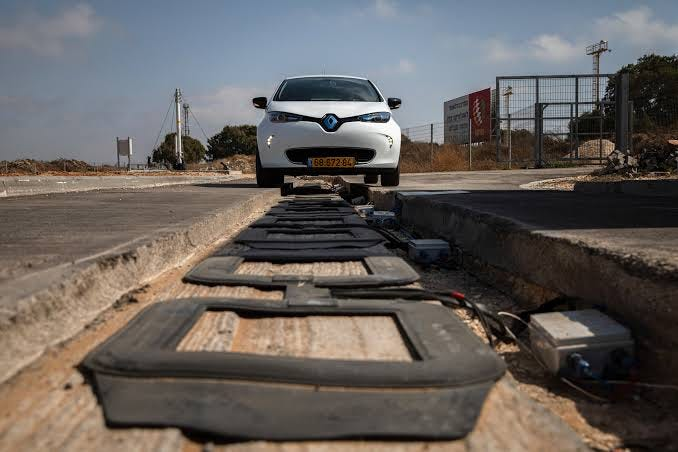]Imagine pulling up to a stoplight, and instead of idling, your electric vehicle (EV) starts charging wirelessly. This isn’t a scene from a sci-fi movie—it’s the future of urban mobility. According to Bloomberg Green, global investments in wireless charging technology for electric vehicles are expected to reach $234 billion by 2030, transforming how we think about urban infrastructure. In this article, you’ll learn how wireless EV charging is set to revolutionize city landscapes, enhance convenience, and support a more sustainable future.
The Rise of Wireless EV Charging
Understanding Wireless Charging Technology
Wireless EV charging, also known as inductive charging, utilizes electromagnetic fields to transfer energy between a charging pad on the ground and a receiver within the vehicle. This technology eliminates the need for cumbersome cables, making the charging process seamless. Major automakers like Hyundai and Volkswagen are already investing in this technology, with pilot programs underway in cities like Oslo and Munich.
- How it Works:
- A charging pad is installed on the ground, typically embedded into parking spaces or roadways.
- An onboard receiver in the EV captures the electromagnetic field and converts it into electrical energy to charge the battery.
- Charging begins automatically when the vehicle is positioned correctly over the pad.
Benefits to Urban Infrastructure
Wireless charging technology is poised to transform urban infrastructure by:
– Reducing Clutter: No more cables and large charging stations.
– Increasing Accessibility: Allows for easier integration into public spaces, parking lots, and residential areas.
– Enhancing Safety: Minimizes trip hazards and electrical exposure risks.
– Supporting Autonomous Vehicles: Facilitates continuous operation without human intervention.
Key Projects and Developments
Innovative Projects Worldwide
Several cities and companies are leading the way in wireless charging projects. For instance, Electrek reports that the city of Oslo has integrated wireless charging into its taxi stands, aiming to make all taxis electric by 2024. Meanwhile, in the United States, the Department of Energy has funded initiatives to explore wireless charging on highways.
- Oslo’s Taxi Initiative: First of its kind, designed to reduce emissions and improve air quality.
- U.S. Highway Projects: Aims to create “electric highways” that charge vehicles while driving.
Industry Leaders and Collaborations
Major industry players are also joining forces to push this technology forward:
– Tesla and Rivian: Exploring strategic partnerships for integrating wireless charging solutions in their upcoming models.
– Nissan and Ford: Collaborating with tech startups to enhance charging efficiency and reduce costs.
According to Wired, these collaborations are crucial as they combine automotive expertise with cutting-edge technology, accelerating the adoption of wireless charging.
Practical Value: Implementing Wireless Charging
How to Charge: A Simple Guide
Charging your EV wirelessly is straightforward:
1. Locate: Find a wireless charging station, which could be a dedicated parking space or a section of the road.
2. Align: Position your vehicle over the charging pad. Most systems will guide you with visual or auditory signals.
3. Charge: Once aligned, charging begins automatically, and you can monitor the process via a mobile app.
Where to Buy: Top Brands and Models
If you’re considering wireless charging for your EV, here are some top brands to watch:
– Hyundai: Offers factory-installed wireless charging options in select models.
– Volkswagen: Plans to launch wireless charging capabilities in their ID series.
– BYD: Known for integrating advanced technology into their EVs, including potential wireless solutions.
What to Compare: Cost and Efficiency
When choosing wireless charging, consider:
– Installation Costs: Varies based on location and infrastructure.
– Charging Speed: Typically slower than wired options but improving with new technologies.
– Vehicle Compatibility: Ensure your EV model supports wireless charging.
The Future of Wireless EV Charging
As urban populations grow, cities face increasing pressure to provide sustainable and efficient transportation options. Wireless EV charging stands out as a pivotal innovation. According to CleanTechnica, advancements in this field could reduce global carbon emissions by 30% by 2040, aligning with international climate goals.
Conclusion: A Wireless Revolution
In summary, wireless EV charging is not just a convenience—it’s a catalyst for urban transformation. By integrating this technology, cities can reduce congestion, improve air quality, and make electric vehicles more accessible to everyone. Are you ready to embrace the future of wireless charging? As we move forward, keep an eye on emerging trends and technologies that promise to reshape our cities and our lives.
Whether you’re an EV owner, a city planner, or simply interested in sustainable technology, the shift to wireless charging represents an exciting step toward a cleaner, smarter urban environment. Join the conversation and explore how you can be part of this revolutionary change.

